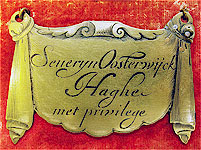 |
A Royal
'HAAGSE KLOK'
by: Keith Piggott. |
 |
|
|
 APPENDIX
2
Back to Main Document. APPENDIX
2
Back to Main Document. |
| |
|
●
Recommendations for Conservation & Valuation. |
|
|
Conservation
is always a matter for the owner, or curator. Conservators are always bound by
their client’s brief. Policies differ widely. Some will remove anachronistic
additions, or replace lost fittings shown by witness marks. Others will simply
stabilise the extant – whatever the final visual result. I recommend the
excellent work by Mathew King and Matthew Read, on Fromanteel’s longcase, at The
Museum of the History of Science at Oxford; also Matthew Read’s outstanding
work, albeit to a more pro-active brief, on the Bowes Museum’s Silver Swan (that
I knew as a boy) recognised as one of England’s spectacular Cultural Properties.
His methods and photo-inventories are a model. Their joint lecture to the
Antiquarian Horological Society proved a fascinating insight into Oxford's
exciting Fromanteel clock, and the constraints of their briefs. I had earlier
also reviewed that clock at first hand.
Paul
Shrouder has ably conserved Oosterwijck’s movement, returning it to running
order while retaining the abused contrate and evidence of surface detail
finishes so important to antiquarians as craft-signatures; we value these. In
the past many horologists have arbitrarily rebuilt or over-cleaned some of our
finest masterpieces, however the mood is changing. One ‘restorer’ left damning
evidence of his own vandalism in Oosterwijck’s Royal Haagseklok.
Restorer’s
inscriptions are cultural vandalism. Why would he inscribe,
“I did not bump the bearings I did not
touch them July 7,1970 (X)"? The
‘bearings’ (pivot holes to barrel and pin-wheel) probably were ‘bumped’ after
the earlier accident. He also scribed the hour-wheel, “Lever added adjusted and repaired July 1970 (X)”. Paul Shrouder
has seen his cryptic invoices; we believe the strike ‘lever’ is actually
untouched, whereas the hammer ‘lever’ has evidence of alterations and is also
wrongly located; probably reworked and moved in 1970. The hammer should be
returned to its original pivots and its spring re-profiled to act under the
hammer. I should have those defacing
inscriptions planished out. Restorer’s notes of ‘repairs’ are for detailed invoices or formal reports, certainly not
on cultural object itself.
|
|
|
Oosterwijck’s
unique clock has suffered accident and too long been overlooked. Its
Ebony on Kingwood case is very important. Fortunately, box and frame are
stable; there is no need for invasive dismantling of either. I would
limit conservation
to:
●
The Box
| 1 |
|
X-ray the hanging points for any
broken screws;
replace iron*
suspension rings.
Even in Coster’s oeuvre (1657-1659) there is no standard form,
(compare D1, D2, D3, D4 D5, D8, and D10).
Coster D1 has elongated steel eyelets, also seen on Coster's
timepiece alarm D5, the nearest contemporary to Oosterwijck's
Royal clock.
*Rust was found in the sockets.
|
| 2 |
|
Leave the two later peg holes as
evidence for a pediment or crest being added. |
| 3 |
|
Make good the solid show wood
backboard; close the two drilled holes; re-glue the split. |
| 4 |
|
Enclose the two inner
chopped-out sides of the box with matching Kingwood veneers.
|
| 5 |
|
Replace the damaged veneers fronting the dial-pins; repair the
cracked and lifting ebony veneer around the lock mortice. |
| 6 |
|
Remove the later steady strips
nailed under the box, to end its “mantel-clock” status for good. |
●
The
Door
Tidy up and square off disturbed outer veneers at lower right
corner.
I
am pleased to be able to report that Mr.
Mathew King has agreed
to carry out this most sensitive conservation.
|
|
●
Valuation?
Financial
interests were ruled out, but the owners would now insure their rare clock.
Unrecorded early Hague clocks rarely appear, those with Royal provenance
never have. In 1998, two unrecorded early Hague clocks by Pieter Visbagh
surfaced in Ireland and were
bought for Ł14,000- each, but were re-sold in Holland for more realistic sums. Lately, two
Coster pendulums came to auction, in
New York and
Amsterdam. The first,
'D3', proved better than the trade
allowed, (Sotheby's NY, Time
Museum, Part.4, Vol.1,
Lot.519, 13.10.2004), now at Zaanse Schans (see Appendix One). The latter,
'D5,' made a magnificent price,
and to an English collector, too. (Christie's
Amsterdam,
19 Dec. 2007).
But, the subject 'Royal
Oosterwijck' is irreplaceable,
literally! Any monetary valuation is subjective, mine reflects this
antiquarian’s honest appreciation of its claims to priority and historic
importance as a unique Dutch cultural property, a
'World Heritage Item'. |
|
|
 Copyright:
R.K.Piggott,
February 20, 2009. Copyright:
R.K.Piggott,
February 20, 2009. |
|
